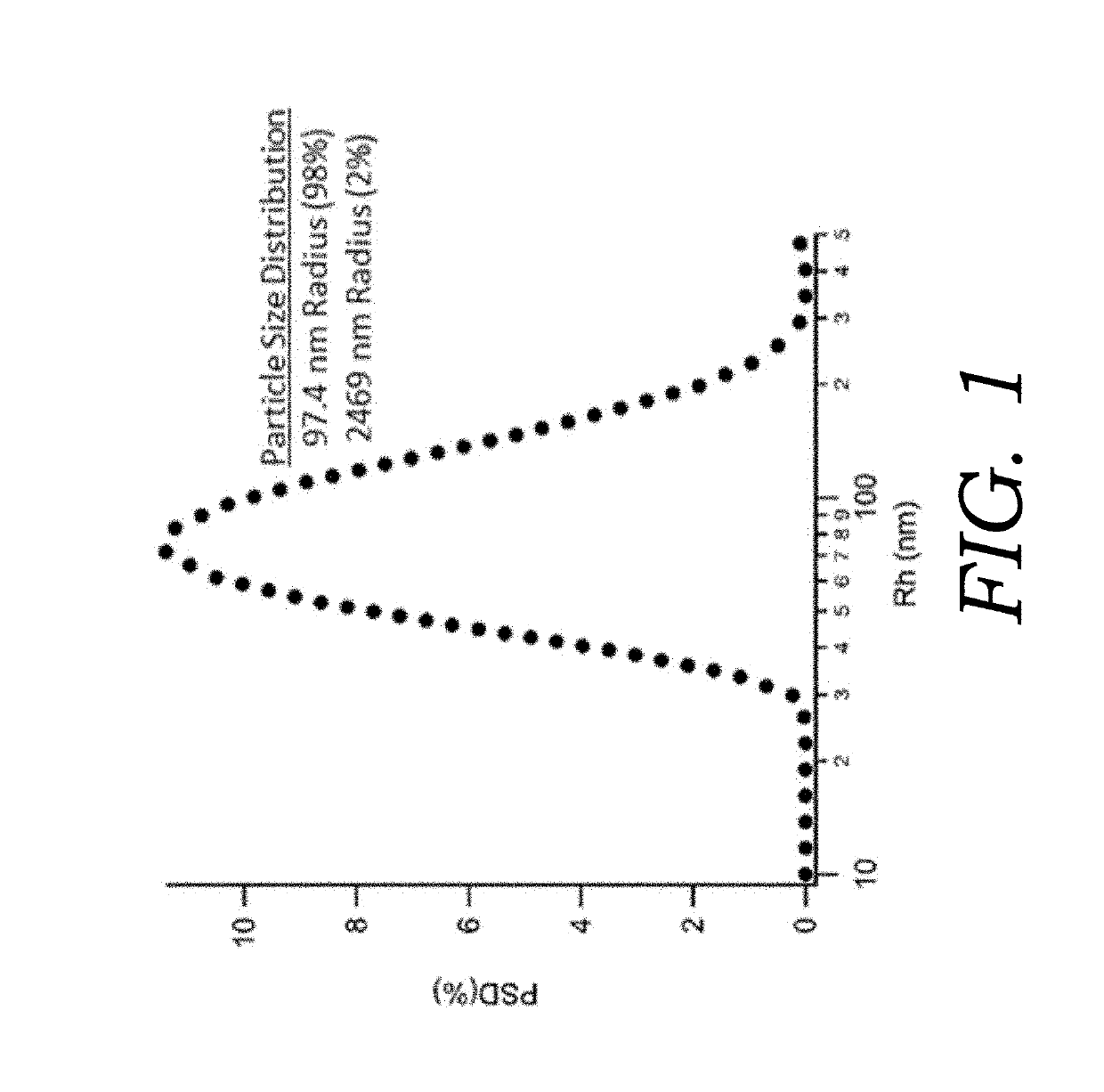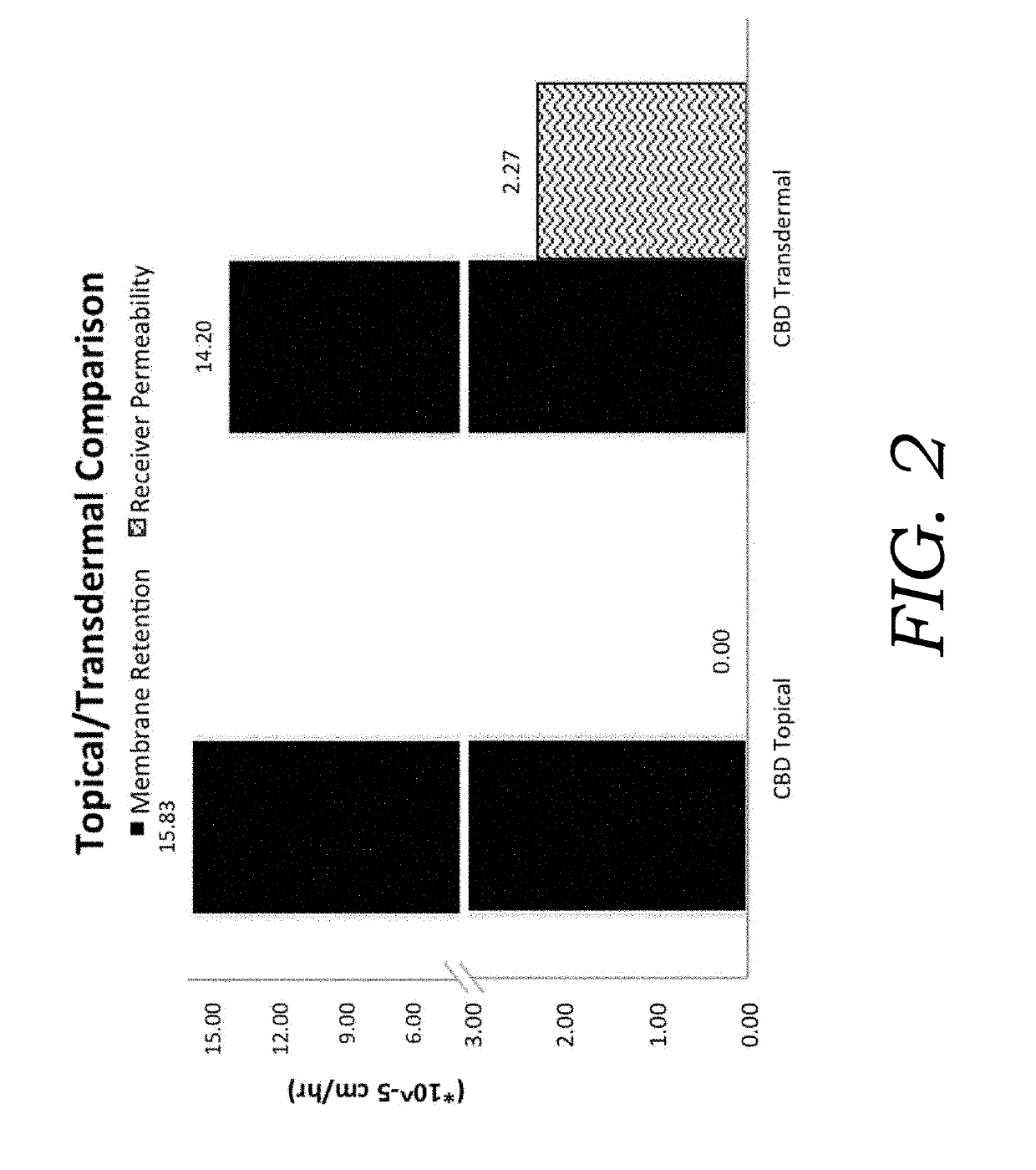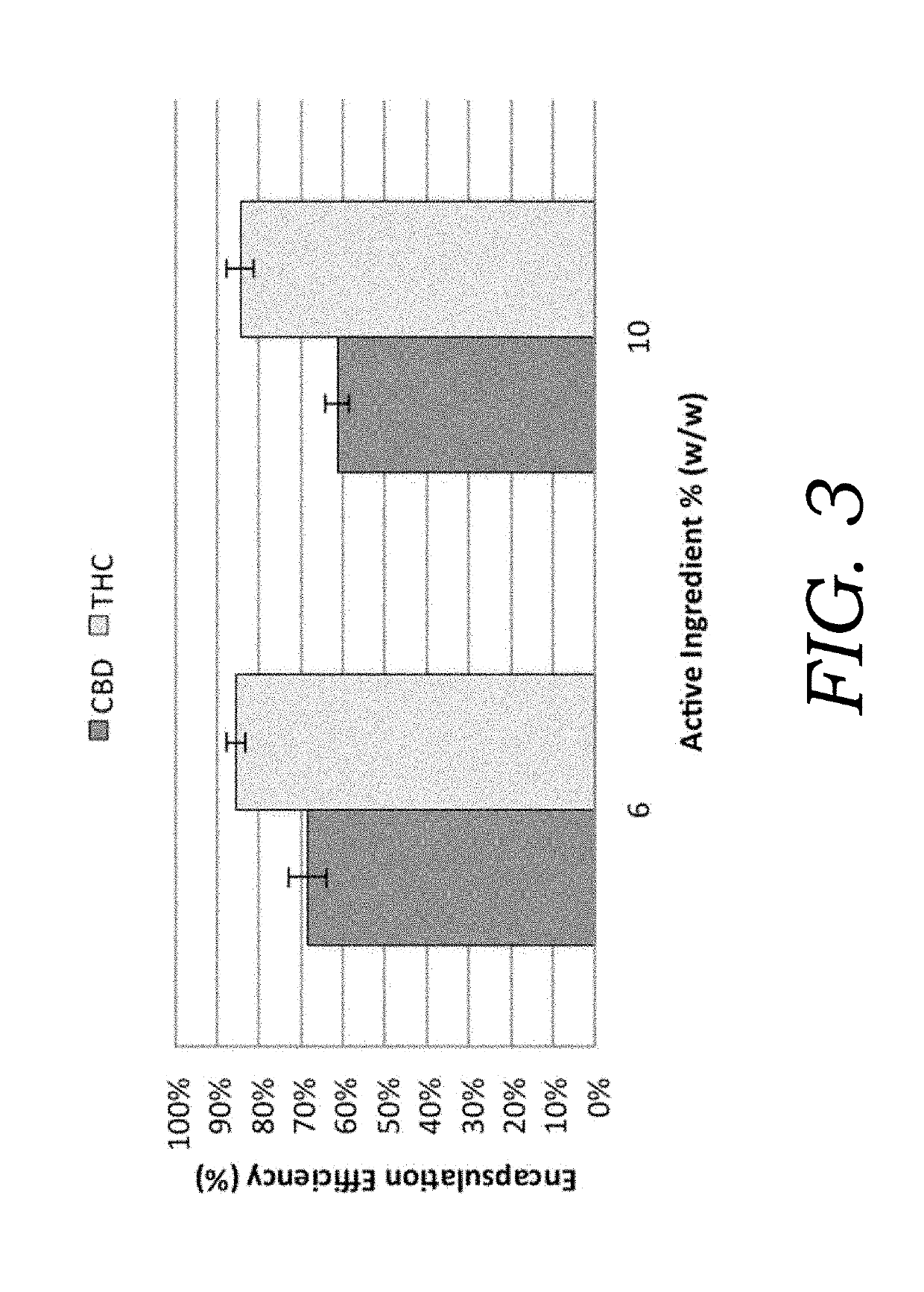Encapsulated cannabinoid formulations for transdermal delivery
- Summary
- Abstract
- Description
- Claims
- Application Information
AI Technical Summary
Benefits of technology
Problems solved by technology
Method used
Image
Examples
example 1
Size Analysis of Micelles
[0066]A fully suspended mixture of CBD (0.01% w / w total), ethanol (0.01% w / w total), sorbitan trioleate (0.016% w / w total), and polysorbate 80 (0.0002% w / w total) was prepared in water (99.91% w / w total) with disodium ethylenediaminetetraacetic acid (0.05% w / w total) as a preservative. The solution is ultrasonicated to reduce the micelle particle sizes within the formulation. The remaining emulsion (pH=7.1) is stable for several days at room temperature but can be shaken to form a stable emulsion if separated after prolonged storage. High sheer homogenization and ultrasonication are common methods to reduce oil droplet size and increase stability of micelle preparations. Furthermore, centrifugation can be used to separate the micelle encapsulated CBD from the oil phase pellet. The pellet containing non-encapsulated CBD can be resuspended in water, mixed, and sonicated to obtain further micelle encapsulated CBD. This step can be repeated and the aqueous fract...
example 2
dermal Gel
[0068]The oil phase was prepared using pure CBD (10.0% w / w total) with ethanol (20.0% w / w total), oleic acid (9.9% w / w total) and polysorbate 20 (7.1% w / w total). Water is added slowly and the resulting microemulsion can undergo shear mixing, ultrasonication, or other methods referred to in Example 1 to increase encapsulation efficiency.
[0069]A secondary water phase is prepared by dispersing acrylate-based polymers, preferably Carbopol 980 (0.5% w / w total) in purified water and neutralized to pH=7 with suitable base. Glycerin (5.0% w / w total) is added as a humectant and mixed until a smooth, clear solution is obtained. A direct method wherein the microemulsion is added slowly into the water / polymer / glycerin matrix and mixed until a highly viscous ointment is obtained. Essential oils of cannabis and other botanicals are added at 1.2% (w / w total) and mixed to create a stable formulation. The essential oils are used as fragrance to increase the sensory application of the oint...
example 3
dermal Gel
[0071]The method of preparation was followed in Example 2 but using a THC-enriched extract (70.52% THC, 2.52% CBN 2.26% CBD, and 1.57% THCa) as the active ingredients.
[0072]To determine the extent of cannabinoid encapsulation in CBD and THC preparations an ultracentrifugation method was adopted (Esposito et al. 2015; Touitou et al. 2000). Emulsions (n=3) were centrifuged using a high-speed microcentrifuge for 30 min at 15,000 rpm to separate the aqueous encapsulated micelles and the pelleted, non-encapsulated fraction. Acetonitrile was used to lyse micelles and solvate active ingredients. Encapsulation efficiency (% EE) was calculated by the amount of encapsulated cannabinoids as a proportion of the total cannabinoid concentration in formulation as determined by HPLC. Encapsulation efficiencies (FIG. 3) were compared between CBD and THC extracts. The encapsulation efficiency was generally higher for THC over CBD at the tested concentrations. The higher % EE for THC could b...
PUM
| Property | Measurement | Unit |
|---|---|---|
| Fraction | aaaaa | aaaaa |
| Fraction | aaaaa | aaaaa |
| Fraction | aaaaa | aaaaa |
Abstract
Description
Claims
Application Information
 Login to View More
Login to View More - R&D
- Intellectual Property
- Life Sciences
- Materials
- Tech Scout
- Unparalleled Data Quality
- Higher Quality Content
- 60% Fewer Hallucinations
Browse by: Latest US Patents, China's latest patents, Technical Efficacy Thesaurus, Application Domain, Technology Topic, Popular Technical Reports.
© 2025 PatSnap. All rights reserved.Legal|Privacy policy|Modern Slavery Act Transparency Statement|Sitemap|About US| Contact US: help@patsnap.com



